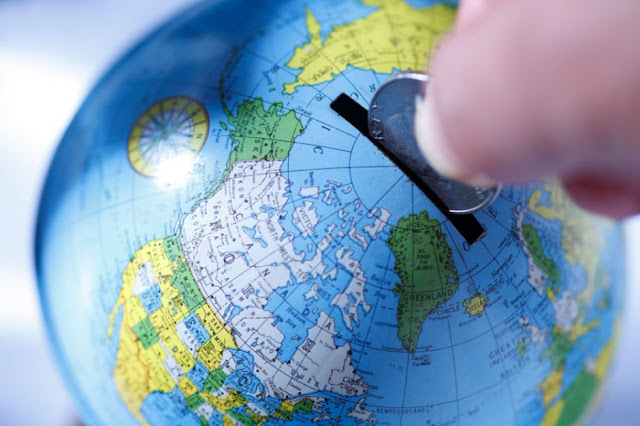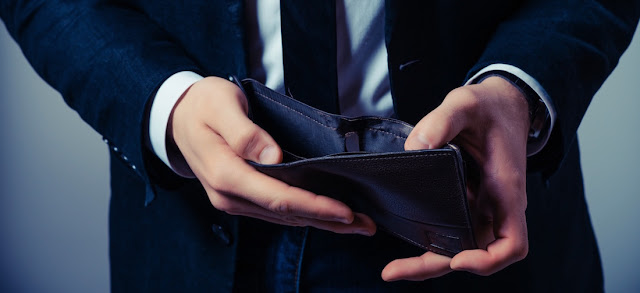Currency represents wealth, a means to an end, and much more—has undergone a long, storied evolution that can be traced back to the origins of human civilization itself. The use of currency is intertwined with the history of money, which by its most common definition is a means of exchanging goods and services.
The Evolution of Coin.
Around the 7th millennium BC in western and central Asia, societies developed a means of trade centered on that region’s rich mineral deposits, extracting metals such as gold, copper and tin. By the 3rd millennium BC, the use of gold bars with standardized weights and value was common in cities in Egypt and Mesopotamia. At the time these “commodity currencies” came into existence, other societies around the globe also started experimenting with standardized forms of currency. Among some items used for trade were cowrie shells, common in East Asia and Africa, as well as stones, beads, animal skins and weapons like knives and spearheads. These forms of currency trade persisted and were refined over the next millennia, until the appearance of the first standardized unit of currency, the coin.
According to historians, coins were first crafted in the 7th century BC, in the ancient kingdom of Lydia, on the western coast of the region now known as Turkey. These first coins were made of a mixture of gold and silver known as electrum. The coins were not always round, as commonly seen today, but they often had irregular sizes and shapes, and were inscribed on only one side. They did come in standardized weights, however, ranging from about 0.15 grams to around 14 grams. Some of the earliest found had the names of two individuals inscribed in ancient Lydian script, Walwel and Kalil, which were thought to possibly refer to the Lydian ruler at the time, King Alyattes, and his father Sadyattes.
From Lydia, the use of electrum coins spread to Greek cities on the coast of Asia Minor, and then to the mainland of ancient Greece. Almost as early as rulers and nations began to produce coin currencies, the practice of counterfeiting followed suit. One early practice was to shave the edges of coins to gain material to produce new coins through forgery.
China and Paper Currency.
Independently from Lydia and Greece, kingdoms and individuals in China also disseminated the use of their own form of coins, based on miniaturized metallic representations of tools such as knives, agricultural implements, and axes. Later, the Chinese adopted rounded coins with inscriptions of Chinese characters.
The Chinese also innovated as they were the first to use paper currency. As the first to manufacture paper around the year 100 by using materials such as linen, hemp, bamboo, and mulberry bark, the Chinese had already developed the practice of writing credit notes on paper and deer skins as guarantees for long-distance trade. The paper bills first appeared during China’s Tang dynasty around the 7th century in the Valley of the Yellow River.
The practice evolved into the development of paper currency, which was found to be a lighter weight substitute for the thousands of coins that needed to be transported between regions to carry out increasingly larger transactions from growing trade. Local Chinese authorities at that time suggested that merchants exchange their metallic coins at the government treasury for paper notes. It came to be known as “Fei qi,” or flying money, likely for its tendency to carried away in a strong wind. The use of paper currency later became fully institutionalized in China during the Song dynasty, which began around 960.
The Dollar.
Meanwhile, as the Bank of England was issuing banknotes, in the fledgling U.S. colonies many colonists who had no access to banknotes were still using forms of barter, such as trading furs, tools, and foodstuffs with Native Americans. But by the time of the U.S. war for independence from England in 1775, the continental congress was already issuing paper currency known as “the Continental,” which was denominated in units known as dollars.
The term “dollar” was taken from a widely circulated Dutch currency at the time that traced the etymology of its own name back to the German term “thaler” used to refer to coins minted in the 1500s in the region of Saint Joachim’s valley in Bohemia. The colonial American government didn’t have strong control over how many were created, however, and the currency quickly lost value.
In 1786, ten years after independence, the Congress authorized the issuance of the dollar by the U.S. government, and in 1792 the government created the U.S. Mint to manufacture and circulating coins. It wasn’t until the Civil War began in 1861 that the government began regularly printing U.S. dollar bills for general circulation and redemption upon demand.
Forex Trading and Currency Guarantees.
Although the pound, the dollar and other currencies of major industrialized nations have been in existence in some form for hundreds of years, the regulation and breadth of currency markets have undergone marked transformation since their beginnings. With the creation of standardized currencies by governments and their increased international trade, the first foreign exchange market, or Forex market, appeared in Amsterdam in the 17th century. While currency began as a means of trade to obtain other items, it has evolved over time to where it is considered an asset itself, and now represents the world’s largest market, with approximately US$5 trillion traded around the globe on a daily basis. Of principle importance for currency holders have been changes in the types of guarantees backing the value of currencies.
Early forms of money, including coins, were based on the intrinsic value of the materials they were made from, but paper currencies historically required the backing of some other asset. Since early on, the most common asset to guarantee currencies was gold, which was coveted both for its versatility of use and aesthetic appeal. Britain was the first to formally adopt a “gold standard” for its currency in 1821 based on the production of gold coins at its royal mint.
The relative value of currencies was not only important to individuals holding them, but was also a key factor for the prosperity of entire nations and economies, and it was frequently part of the circumstances leading to international conflicts over the years. In 1946, after the conflicts of WWI and WWII, countries around the world entered into the Breton Woods agreement, which helped formalize the use of gold and also the U.S. dollar to back currency values around the world.
As in the past, the value of currencies under the system necessarily corresponded to the amount of gold held by governments. As the production and reserves of gold failed to keep pace with the demand for creation of money, the U.S. in 1973 decided to go off the gold standard, and other countries followed suit.
Since then, the relative value of currencies has been backed not by one particular asset, but by governments’ creditworthiness and the faith of the public in their abilities to pay back any debts owed by them. The abandonment of the gold standard helped alleviate the need for some governments to amass and stockpile large supplies of gold, but it also forced countries to seek new means to guarantee stability for their currencies as they “floated” freely against one another.
The global currency market fluctuations that occurred from that time were among the factors that helped encourage the nations of continental Europe in 1999 to follow through with their long-held plans to consolidate their national currencies into a single unit called the Euro.
For investors, trading has grown ever more sophisticated since formal exchanges first appeared. And in the 20th century, with the emergence of electronic trading, large volumes of currencies began to be traded among banks, businesses, and individuals around the globe nearly instantaneously.
Further, investors have also adopted new financial instruments known as derivatives to gain a financial advantage in carrying out their currency trading. These instruments, such as futures, options, and swaps, allow traders to time their exchange of currencies according to their wishes and hedge against large unpredictable fluctuations in the value of currencies caused by global political and economic events.
Money Travels.
The shift to paper money in Europe increased the amount of international trade that could occur. Banks and the ruling classes started buying currencies from other nations and created the first currency market. The stability of a particular monarchy or government affected the value of the country's currency and the ability for that country to trade on an increasingly international market. The competition between countries often led to currency wars, where competing countries would try to affect the value of the competitor's currency by driving it up and making the enemy's goods too expensive, by driving it down and reducing the enemy's buying power (and ability to pay for a war), or by eliminating the currency completely.
Mobile Payments.
The 21st century gave rise to two disruptive forms of currency: Mobile payments and virtual currency. Mobile payment is money rendered for a product or service through a portable electronic device such as a cell phone, smartphone or PDA. Mobile payment technology can also be used to send money to friends or family members. Increasingly, services like Apple Pay and Samsung Pay are vying for retailers to accept their platforms for point-of-sale payments.
Virtual Currency.
Bitcoin, invented in 2009 by the pseudonymous Satoshi Nakamoto, became the gold standard--so to speak--for virtual currencies. Virtual currencies have no physical coinage. The appeal of virtual currency is it offers the promise of lower transaction fees than traditional online payment mechanisms and is operated by a decentralized authority, unlike government-issued currencies.
Today World Without Money.
Money, in some form, has been part of human history for at least the last 3,000 years. Before that time, it is assumed that a system of bartering was likely used.
Bartering is a direct trade of goods and services - I'll give you a stone as if you help me kill a mammoth - but such arrangements take time. You have to find someone who thinks an ax is a fair trade for having to face the 12-foot tusks on a beast that doesn't take kindly to being hunted. If that didn't work, you would have to alter the deal until someone agreed to the terms. One of the great achievements of money was increasing the speed at which business, whether mammoth slaying or monument building, could be done.
Slowly, a type of prehistoric currency involving easily traded goods like animal skins, salt and weapons developed over the centuries. These traded goods served as the medium of exchange even though the unit values were still negotiable. This system of barter and trade spread across the world, and it still survives today on some parts of the globe.










EmoticonEmoticon